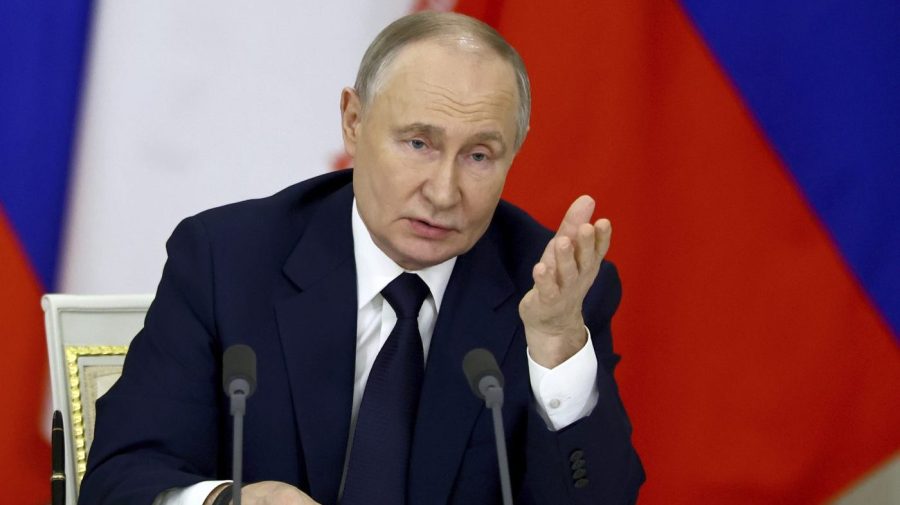
Integrating Russia into a Western security framework may sound almost treacherous as the war in Ukraine rages on. After three years of brutal conflict, the notion of engaging with Moscow, let alone incorporating it into a broader European security structure, is anathema to many in the West.
But security is built on pragmatism, not emotions. If the goal is to prevent future wars and ensure long-term stability, then difficult, even unpalatable, discussions must take place. The best time to negotiate with Russia was three years ago. The next best time is today.
The planned U.S.-Russia negotiations in Saudi Arabia, initiated by President Trump, are likely to deliver an outcome that could have been reached before February 2022: a neutral Ukraine and an implicit understanding that it will not join NATO. Any deal now will likely involve Ukraine conceding territories that Russia has seized.
When it comes to Russia’s role in the broader Western security order, the longer the West delays a dialogue with Russia, the higher the chances of another conflict.
Of course, Russia’s actions — especially its full-scale invasion of Ukraine — have severely undermined trust. The annexation of Crimea in 2014 and Moscow’s open contempt for Ukraine’s sovereignty mean that any reintegration into a Western security framework must come with strict conditions.
However, an exclusively adversarial approach — endless sanctions, military deterrence and strategic containment — increases the likelihood of future conflicts. The challenge is finding a middle ground between deterrence and engagement.
Rather than leaving Russia indefinitely outside the Western security order, a new framework should be designed that prevents future conflicts while upholding international norms.
For instance, a structured NATO-Russia Council could serve as a forum for military transparency, crisis prevention and conflict resolution. Under strict conditions, Russia and NATO could resume dialogue on military doctrines and risk reduction. Additional measures could include military hotlines, force reductions near borders and transparency agreements on troop movements.
None of this would grant Russia veto power over NATO’s decisions, but it would help manage tensions and avoid unnecessary escalation.
Additionally, discussions can explore neutral security zones, including the possibility of Ukraine adopting a permanently neutral status. This would need to be accompanied by demilitarized zones with strict international monitoring and verification mechanisms to prevent violations. Similar agreements could be considered for other flashpoints, including Georgia, where Russia has historically exerted influence.
A gradual economic reopening could also be on the table — under strict conditions. If Russia ends its aggressive policies and abides by international norms, limited reintegration into European energy markets could help stabilize global energy supplies. Conditional agreements on oil and gas exports could ensure that energy remains a tool for economic cooperation rather than a weapon of coercion.
A post-war Western security architecture should involve Russia under a new paradigm. This framework must ensure that the Kremlin cannot dictate terms. Instead, a structured approach — reminiscent of Cold War-era security agreements — should be pursued, balancing deterrence with engagement.
Skepticism toward such an approach is understandable, especially from Eastern European states, which bear the brunt of Russian hostility. Ukraine, in particular, will vehemently oppose any Western-led security arrangement that gives Russia even the slightest perception of influence over European security matters.
Yet, the failure to engage Russia diplomatically before 2022 contributed to the Ukraine war. It was avoidable. Now, the war will likely end within the next year, but unless a broader dialogue takes place about Russia’s role in European security, future conflicts may erupt elsewhere. Even if full-scale war is avoided, hybrid warfare, including cyberattacks and economic coercion, will continue.
Another reason to explore this integration is its potential to weaken Russia-China ties. The growing strategic alignment between Moscow and Beijing has increasingly posed challenges for the West. By isolating Russia entirely, the West inadvertently pushes it deeper into China’s orbit, strengthening a bloc that is harder to confront.
Engaging Russia within a Western security framework, even under stringent conditions, could drive a wedge between Moscow and Beijing. Dealing with Russia and China separately is far more manageable than facing them as a united front.
The Cold War offers a valuable precedent. Even at the height of U.S.-Soviet tensions, diplomatic channels remained open, and arms control agreements — such as the Strategic Arms Limitation Treaty, the Strategic Arms Reduction Treaty and the Intermediate-Range Nuclear Forces Treaty — helped manage competition. A similar approach can be explored today. The goal is not to embrace Russia as an ally but to ensure that its place in the security order prevents further destabilization.
A comprehensive security architecture — built on deterrence, conditional engagement and strict compliance with international norms — offers a pathway toward stability. The alternative is endless confrontation, with future crises waiting to erupt.
The West must make a difficult but necessary choice: to work towards a security order that includes, rather than isolates, Russia.
Alexander Clackson is the founder of the Global Political Research Center think tank in London, and a researcher on Russia, which he has covered for the past decade. He is currently conducting research on the political views of ethnic minorities in Russia.












